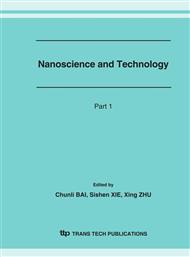p.1033
p.1037
p.1041
p.1045
p.1049
p.1053
p.1057
p.1061
p.1065
Evolution Mechanisms of Nano-Clusters in a Large-Scale System of 106 Liquid Metal Atoms During Rapid Cooling Processes
Abstract:
A molecular dynamics simulation study has been performed for a large-sized system consisting of 106 liquid metal Al atoms to investigate the evolution characteristics of nano-clusters formed during rapid solidification processes. The cluster-type index method (CTIM) has been applied to describe the structural configurations of the basic clusters and nano-clusters. The results show that the icosahedral clusters (12 0 12 0) and their combinations play a critical role in the microstructural transitions. The nano-clusters are mainly formed by combining basic and medium sized clusters through continuous evolution. Their structural configurations are different from the multi-shell structures obtained by gaseous deposition, ionic spray, and so on. The central atoms of basic clusters composing the nano-cluster are bonded with each other, some central atoms are multi-bonded, and others single-bonded.
Info:
Periodical:
Pages:
1049-1052
Citation:
Online since:
March 2007
Authors:
Keywords:
Price:
Сopyright:
© 2007 Trans Tech Publications Ltd. All Rights Reserved
Share:
Citation:


